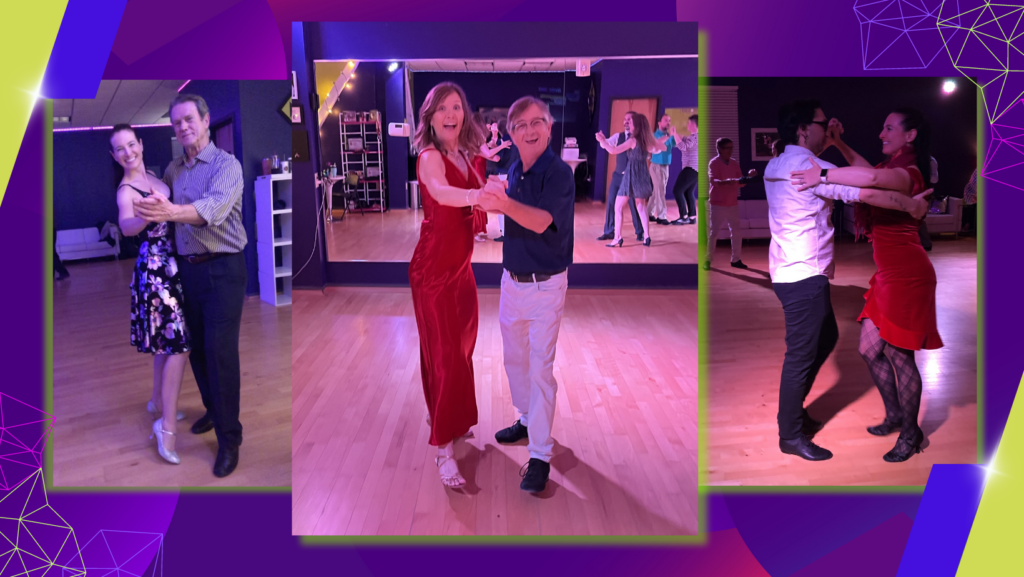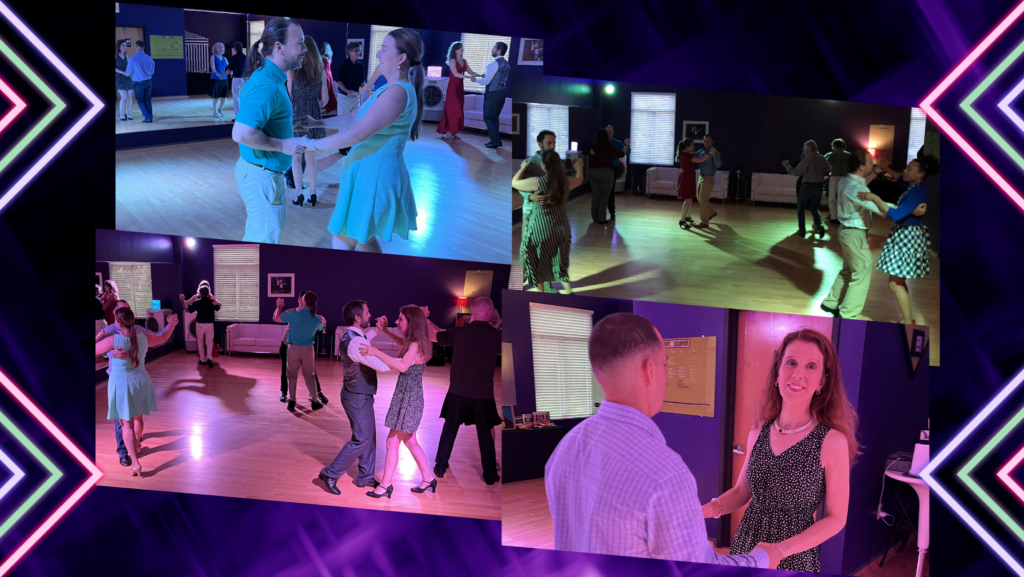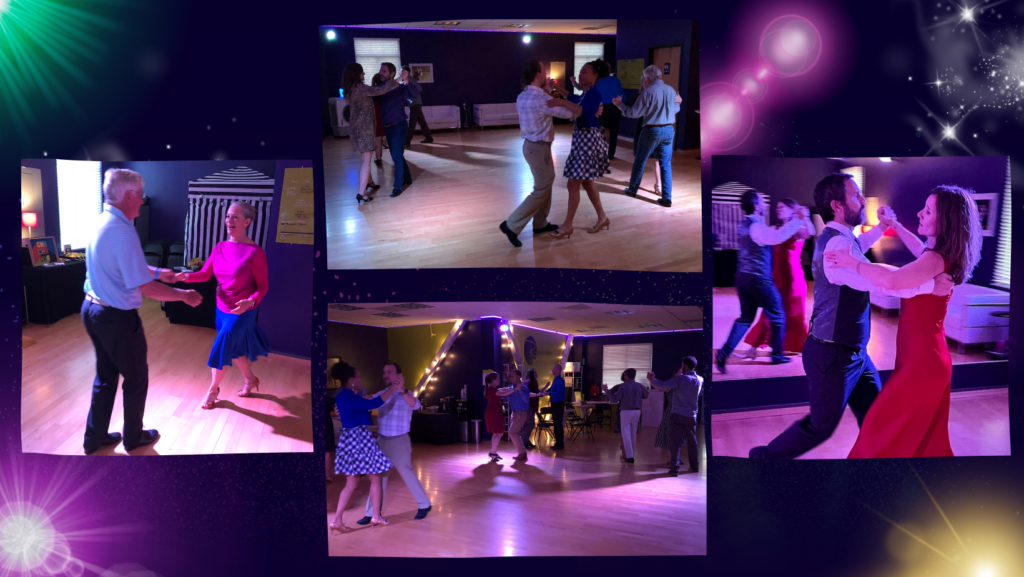Top 10 Social Dance Tips for Followers ??

As followers we love to dance, and we always want to enjoy thrilling dances with great leaders.
Here’s a secret – great leaders love to dance with great followers, and so what are the things that we can do as followers to be a great partner, to be enjoyable to dance with, and to be a desired partner on the social dance floor?
As a dancer, I have 25 years experience as a follower, 15 years as a leader, and 10 years as a studio owner (and thus have been the confidante of many leaders who’ve shared their likes and dislikes with me over the years).
You don’t have to be an advanced dancer, have years of experience, or know tons of moves to do these 10 things.
Top 10 Social Dance Tips for Followers ??
#10 Be patient.
Each role (leader/follower) is challenging in its own way, and following is certainly an important skill that requires much time and effort to develop. That said, leaders do have more responsibility on the dance floor. It’s like they’re juggling and trying to keep 10 balls in the air at the same time.
And since followers only have a few balls to keep in the air, they have extra time to notice when their partner drops a ball or two. They may get inpatient, bored, or point out minor errors their partner makes…
It’s leader appreciation time! Let’s compare leader responsibilities versus follower responsibilities.
Leader responsibilities:
- Staying on time to the music
- Keeping a good dance frame
- Knowing their own steps and footwork for each figure
- Knowing where the follower needs to go for each figure
- Leading the follower
- Navigating the couple around the dance floor
- Communicating changes of rhythm – for example in Foxtrot you might change from SSQQ to SQQ.
- Thinking ahead to plan the next step
- Noticing and responding to the follower’s movements and adjusting their steps as needed
- Avoiding collisions with other couples
Follower responsibilities:
- Keeping a good dance frame
- Staying in dance position
- Responding to the Leader’s invitations and moving their body accordingly
We can see from these lists, leaders have a lot more to worry about when partner dancing. Most followers at the beginning level don’t even know their own steps (they cannot dance figures without a partner to guide them). Since your partner knows not only their steps, but your steps also, and is doing 8 other things while leading you around the dance floor, can we just let it slide that their elbow dropped a few inches or maybe they’re not quite dancing on the beat?
Be patient with your partner – always, and especially in the beginning of their dance journey 🙂
#9 Don’t count for your partner if they’re off the beat.
This is essentially pointing out that your partner is wrong, telling them that it’s not ok for them to learn and progress at their own pace, and that they need to fix themselves immediately to accommodate you.
Followers think counting for the leader is helping them. It’s actually creating more stress and pressure. Often, leaders are not off time because they’re incapable of hearing the beat, it’s because at the moment they need to focus their attention on other more important matters (their steps, leading you, navigation, ect). It’s ok for leaders to learn to juggle 3 balls at a time and then progress to 4, 5, and so on. Since followers are only juggling 3 balls while dancing, you have the luxury of time to notice when your partner is dropping ball 7. Can you see it’s not helpful to say to a new juggler, “look you’re dropping ball 7; it’s about to hit the floor.” They simply need more practice, not a bystander pointing out their failed attempts.
Yes, in an ideal world, the leader would dance on time with the music. But in the real world, beginning leaders can get overwhelmed and can only focus on one thing at a time. And leaders of all levels need to focus on footwork when learning new figures. Often it takes all their attention to get their steps right so they’re not able to pay attention to the music at that moment.
This is ok, and it’s a normal part of the learning process. It won’t be forever; leaders will soon get their steps in muscle memory which will free up their time to focus on the music so they can dance to the beat. This can take many months, so be generous and allow your partner to progress in their own time.
In the meantime, your job is to follow your leader (not the music). It’s better to dance together (and be off time) than to clash because you’re on different counts.
Of course, if your partner asks you to count them in, that’s always ok. But you should never point out that they’re off time, or suggest that they are, by counting for them while dancing. It’s impolite and not helpful.
#8 Don’t suggest moves for your partner to do.
What this sounds like:
- “Let’s try that move we just learned in class”
- “You can turn me here”
- “Can we dance silver” (if your leader is dancing bronze level figures)
- “Do that move you danced with so-and-so”
(FYI, these are all actual examples leaders have vented to me about after dance parties.)
It’s the leader’s job to choose which figures to lead. And they select moves based on not only your ability, but what moves they remember and are comfortable leading at that moment.
When followers suggest figures, you are pressuring your partner to dance steps they may not be prepared to lead well.
It also suggests that you’re bored or unhappy with their dancing and that they’re not good enough for you. Encourage leaders to continue dancing by allowing them to select figures they are comfortable leading and simply enjoy your time together.

#7 Hold your arms up & don’t lean on your partner.
Followers often unknowingly hang on their partner. A polite leader will never point this out to you, so assume this applies to you and let’s work to improve our frame and posture.
If you don’t support the weight on your own arm and rest it too heavily on the leader, you weigh them down. It’s exhausting and unpleasant for them to hold your arm up for you.
And even if you’re whirling around the dance floor and not quite sure what you’re doing, don’t grab your partner and hang on for dear life.
Even if you’re not actively pushing down on your leader, you still might feel heavy unless you keep your body energized and lifted. A follower should have a light, upward connection and while the arms do touch – your arm should not “rest” on your partner.
#6 Don’t chit chat while dancing.
This one might seem confusing. Isn’t it polite to make small talk with someone? The issue is, once again, leaders are juggling 10 balls in the air while dancing. If you start talking to them, now they have to focus on the conversation and some balls will probably drop on the ground.
If you initiate conversation with your leader you may notice that they start doing basics (or simple steps) since they can’t focus on intricate figures and talking to you. So let your partner focus on the dance and the music, and save your conversation for in between dances.
#5 Stay in your dance position.
This is one of your primary jobs as a follower and enables your partner to lead effectively. In dances with an offset, ensure you’re on your partner’s right side (not directly in front of them). When you’re in position, it’s more comfortable and easy for your partner to dance with you.
Be vigilant in monitoring your position and adjust your steps to stay in place as you dance.
#4 Slow down and wait for the lead.
To follow is to respond, after an invitation from the leader. I believe it’s one of the most difficult things to master. If you go at the same time as your partner, lead/follow doesn’t work; if you go before your partner, lead/follow doesn’t work. We all know this, and yet, I think we all struggle with it.
Followers should operate on a slight delay, so wait for the signal before you go. Leaders will give you a heads up about what’s coming next before they invite you to move. So for example, they might open their arm to create space for an underarm turn. Even though you recognize this indication (and thus suspect what’s coming next), you still want to wait for them to circle their hand indicating a direction for your turn. Don’t just do the move as soon as you see what’s coming. Wait for the lead’s invitation to move.
When done well, leading and following is absolutely juicy and delicious. It’s a challenge, but worth the effort to get right.
#3 Don’t correct your partner.
Any time spent noticing what your partner is doing wrong is time not spent on noticing how to improve your own dancing. Given that we are only responsible for ourselves, and we can only change ourselves – spend your time wisely.
The biggest ways I see followers correct their partners is:
- Lifting your partner’s elbow into position
- Counting for them if they’re off time
- Saying “you lead that wrong” or “I didn’t feel that”
- Telling them you wish they danced like so-and-so
Pointing out all the ways you feel your partner is falling short is hurtful and discourages leaders. And social dancing is not the time or place for corrections, even from teachers. It’s ok for your partner to be a beginner, to not do everything perfectly. Accepting your partner as they are (mistakes and all), is one of the best ways to help your partner grow and improve as a dancer.
Work on being the best dancer you can be, and trust that your partner is doing the same.
#2 Always work on improving your dancing.
This is true for everyone, but sometimes I meet followers who say “well, there aren’t any good leaders around here, so why bother”. If we’re not getting better – we’re getting worse, so keep your skills sharp.
A well-trained follower will always be in demand at social dance events. And what better place to find dance partners – leaders who care about dancing and want to get better – than at dance class?
Of course you’ll want to continue to expand your repertoire of figures, but mostly for followers, you really want to get good at the basics: great posture, excellent frame, wait for the lead, move your own body, match your partner’s energy, ect. The skill of following is more important than knowing a bunch of steps.
#1 Social Dance Tip for Followers ??
My #1 tip is – Smile! It really is that simple. The leader’s job on the dance floor is to show you a good time – to curate a dance tailored to your abilities and to let you shine.
They’re working so hard to do a good job, and it means the world to them if you let them know you’re enjoying yourself. I can’t count the number of leaders who’ve come up to me after a party telling me how much they enjoyed dancing with so-and-so because they were beaming, so clearly happy and having fun. These weren’t the most skilled dancers, the most attractive, or anything else you might assume a leader would want – they were simply the dancers who expressed the most enjoyment while dancing.
A joyful smile fills your partner with confidence, they will enjoy dancing with you, and both of you will have a better dance because of it ?
